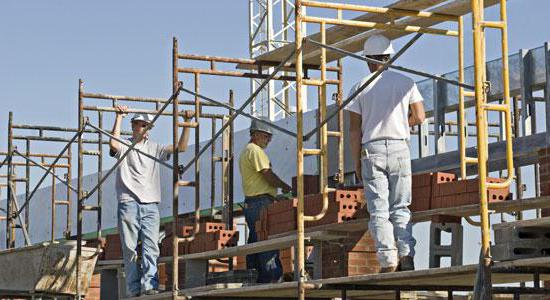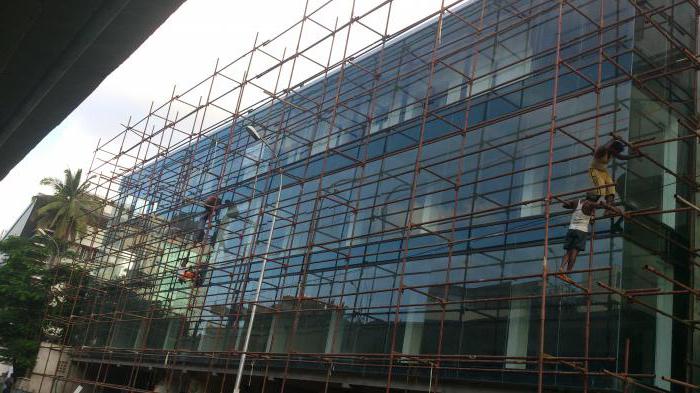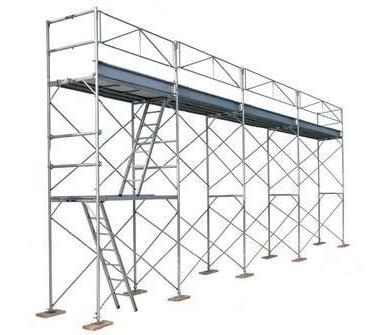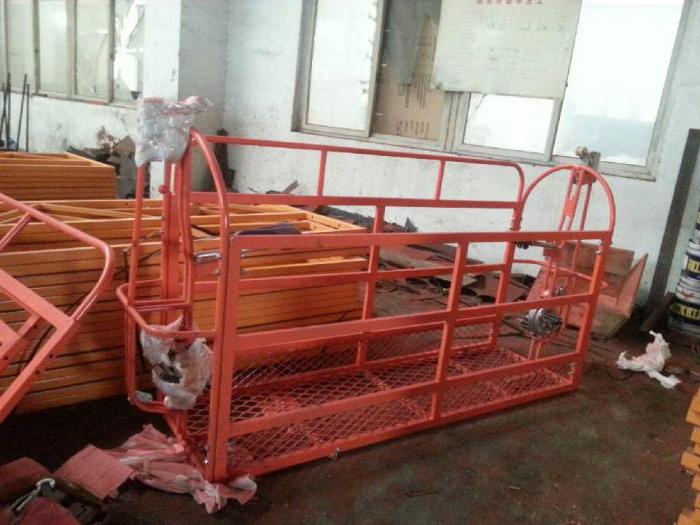Means of conditioning are called a special type of auxiliary equipment used to accommodate workers and materials when performing repair and construction activities. When assembling such structures, as well as their operation, certain requirements must be observed.
Appointment and classification of the facilities used in construction
The equipment of this variety is classified as follows:
- Platforms. They are mounted, rigidly fixed structures used directly at the place of work.
- Towers. These metal structures move on a self-propelled chassis and are usually used for short-term work by one or two people.
- The woods. Equipment of this type is used in large-scale operations. They are multi-tier forests, developed along the front and the height of the structure. They can be classified as freestanding, mobile, mounted, rack-mounted auxiliary.
- Scaffold. So called special single-tier structures, free-standing or suspended. This type of conditioning means is of limited size.

Such auxiliary equipment can be made of different materials. Metal structures are more durable and reliable. Wooden are lighter and cheaper.
Classification by installation method
According to the installation method, the means of conditioning can be divided into suspended, mounted, free-standing and attached. In the latter case, the equipment is rigidly attached to the supporting structures of the constructed object. Suspended lifting aids are fixed by means of rigid or flexible rods. Free-standing equipment has its own stability. The attachment is fixed to the supporting structures not with the help of rods, but rigidly.
Classification by the method of changing the front of work
According to the method of changing the height of the workplace, the means of cultivation can be divided into stackable, continuous lifting, constant height. By the method of changing the front of the workplace - on mobile or interchangeable. Among other things, the means of conditioning are classified by such a feature as bearing capacity. In this regard, light, medium and heavy equipment is distinguished.

Additional designs
The equipment discussed above is the main one and is used very often when performing construction work. In addition to scaffolding, playgrounds, etc., such facilities as stairs can also be used. This equipment can be:
- free-standing;
- attached inclined;
- attached vertical;
- marching.
GOST Standards
Manufacturing means must be developed and developed with exact observance of the standards GOST 24258 88. The standard regulates the parameters and characteristics of structures of this type of all varieties. In addition, in the manufacture of such equipment, the standards of GOST 15150 must be observed. According to this standard, scaffolding, cradles, etc. are supposed to be made in the climatic version of CL or U.
Materials and methods of manufacturing the means of conditioning are selected so that in finished form they can withstand the load:
- from own mass;
- from the wind;
- from materials used in the repair and construction;
- from people working at height.
According to the standards, the reliability coefficient for the load from the dead weight of the scrubbing means should be 1.1, from people - 1.2, from the wind - 1.3.

Main parameters in accordance with GOST 24258 88
What characteristics the designs of specific varieties should differ can be found in the table below.
| Equipment | Maximum height of the platform (m) | Load (kgf / m2) |
| The woods | From 20 to 100 | 100, 200, 250, 300 or 500 |
| Stage | 10, 16 or 120 depending on the variety | 200, 300 or 500 |
| Hanging cradles | 150 | 100 or 200 |
| Hanging platforms | 2-8 | 200 |
For different types of stairs, the maximum height indicator can be 10, 22, 20 or 30 kg, and the load can be 100 or 200 kgf / m2.
Requirements SNiP III-4-80
Working at height with the use of aids is always associated with a certain risk. Therefore, the set standards must be strictly observed during their operation. According to SNiP III-4-80, the safety of work is ensured by:
- The correct assembly. Work flooring should be as even as possible. In this case, the gaps between the boards should not exceed 5 mm. If the flooring is located above 1.3 m, airborne elements and fences should be used.
- Correct installation. Soil at the place of assembly of forests must be compacted. In addition, surface water is diverted. The angle of inclination of the stairs should not exceed 60 g with respect to the horizontal plane. Installation of the scaffolds closer than 5 meters from the poles of power lines or working electrical equipment is not allowed.

Inspect the structure during operation in order to verify safety should be every 10 days. When performing this procedure, the means of conditioning are checked:
- for the presence of various kinds of defects;
- strength and stability;
- for the presence of fences in the right places.
That is, the safety of using such structures as mounted or self-supporting forests, towers, scaffolds, etc., in the future is determined. When working with access ladders more than 1.3 m high, a safety belt must be used without fail. Accumulations of people in one place on the flooring is not allowed.
Forest exploitation regulations
The constructions of this variety must be fully mounted. With their partial dismantling, the remaining flooring cannot be operated. It is also not allowed to use this equipment for storage. During operation, only materials used in the repair or construction process can be supplied.

While working on scaffolding, it is forbidden to strike at structures with regulations. The load on the deck should be distributed as evenly as possible. All kinds of cargoes go upstairs exclusively with the use of rope insurance. This is done in order to prevent impact on structures.
Weather factors
Construction work is being carried out using a means of conditioning usually on the street. Of course, the rules also govern the rules of their operation in adverse weather factors. So, with snowfall, thunderstorm, fog or ice, all work on the forests should be stopped. Do not operate the means of conditioning and at a wind speed of 15 m / s.
Rules for the use of mobile structures
When performing work on tower tours and other mobile equipment, the following standards should be observed:
- Before moving, the structure must be free of people, materials and containers;
- the doors in the guards must open inward and be equipped with double-acting locking devices;
- the slope of the surface along which the structure is moving must not exceed the maximum permissible standards;
- it is not allowed to operate mobile structures at a wind speed of more than 10 m / s.

Operation of suspended structures
This type of conditioning equipment can only be used after testing. At the same time, the load during the audit should be 20% higher than the norm. The test time is 1 hour. Thus, the first check is carried out.All subsequent ones are carried out by a load exceeding the standard by 10%.
Features of storage and transportation
Suspended, hinged, free-standing or mobile lifting equipment can be transported by absolutely any means of transport. The exceptions are those cases when transportation is not possible without the appearance of mechanical damage on the equipment, severe pollution, damage to paint.

Storage facilities should be made in accordance with the standards prescribed in GOST 15150 under conditions 5.








